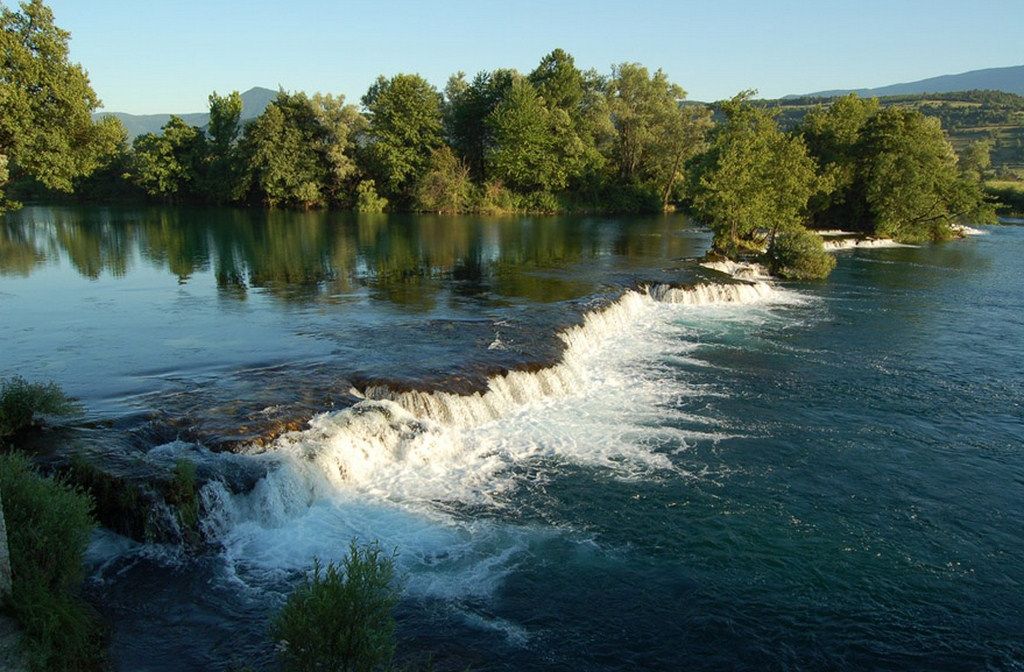Vrbas River

Nestled amidst the picturesque landscapes of western Bosnia and Herzegovina, the Vrbas River emerges as not just a geographical feature but a cultural lifeline that has shaped the identity and heritage of the region for centuries. With its serene waters, lush surroundings, and strategic location, the Vrbas holds a special place in the hearts and minds of the people who call its banks home. In this comprehensive exploration, we delve into the myriad reasons why the Vrbas is culturally important, uncovering its influence on art, architecture, folklore, and community life.
The Vrbas River: A Source of Inspiration and Identity
Before we delve into the cultural significance of the Vrbas River, it is essential to understand its geographical context within western Bosnia and Herzegovina. Spanning a length of 250 kilometers (160 mi), the Vrbas flows through valleys, gorges, and plains, serving as a right tributary of the Sava River. The city of Banja Luka, one of the region’s largest urban centers, is located on the banks of the Vrbas, adding to its cultural and historical importance.
As we trace the path of the Vrbas, we discover that its waters have been more than just a source of sustenance and transportation for the communities that inhabit its shores. The river has been a source of inspiration and creativity, shaping the artistic, architectural, and cultural landscape of western Bosnia and Herzegovina in profound ways.
The Cultural Importance of the Vrbas River:
Art and Architecture:
- Throughout history, the Vrbas River has served as a muse for artists and architects, inspiring countless works of art and architectural marvels. From medieval castles and Ottoman bridges to modern-day sculptures and installations, the river has been a recurring motif in the cultural landscape of the region.
- One notable example of the Vrbas’s influence on art and architecture is the iconic Kastel Fortress in Banja Luka, which overlooks the river from its perch atop a hill. Originally built during the Roman era and later expanded by subsequent rulers, the fortress stands as a testament to the region’s rich heritage and strategic importance.
Folklore and Mythology:
- The Vrbas River is deeply ingrained in the folklore and mythology of the region, with countless tales and legends passed down through generations. From stories of river nymphs and water sprites to tales of heroic deeds and tragic romances, the river has inspired a rich tapestry of myth and legend.
- One such legend is the tale of the Vrbas Dragon, a mythical creature said to inhabit the depths of the river and guard its treasures. According to folklore, brave knights and adventurers would embark on quests to slay the dragon and claim its riches, adding to the river’s mystique and allure.
Community Life and Identity:
- Beyond its artistic and mythological significance, the Vrbas River plays a central role in the daily lives and cultural identity of the communities that reside along its banks. From traditional fishing villages to bustling urban centers, the river serves as a gathering place, a source of livelihood, and a symbol of community pride.
- Festivals, celebrations, and rituals often revolve around the Vrbas River, bringing people together to honor their shared heritage and connection to the land. Whether it’s a riverside picnic, a boat race, or a religious ceremony, the river provides a backdrop for communal activities and cultural expressions.
Conclusion:
In conclusion, the Vrbas River stands as a testament to the enduring cultural legacy of western Bosnia and Herzegovina. As we have seen, the river’s influence extends far beyond its physical boundaries, shaping the artistic, architectural, and cultural landscape of the region in profound ways. From inspiring works of art and architecture to fueling the imagination with tales of myth and legend, the Vrbas continues to be a source of inspiration, identity, and pride for the people who call its banks home. As we celebrate its cultural importance, may we continue to cherish and protect this cherished waterway for generations to come, ensuring that its legacy endures for centuries to come.
Know More about the Vrbas River.
What are The Religious Places of the Vrbas River?
When Did The Vrbas River Basin Become a Focus?
Where is The Vrbas River Located?
Who Were The Key Historical Figures and Civilizations of The Vrbas River?
How to Reach Vrbas River?




